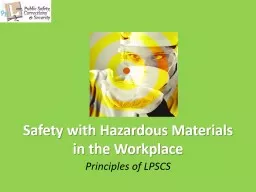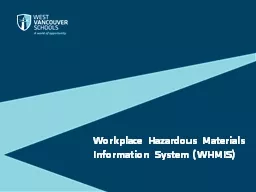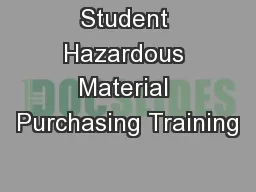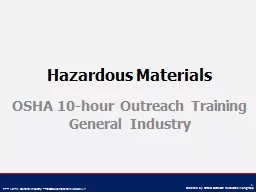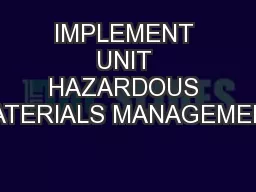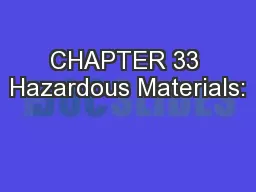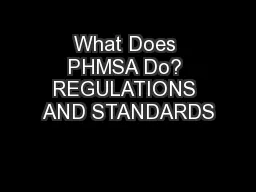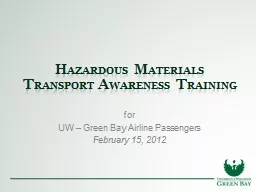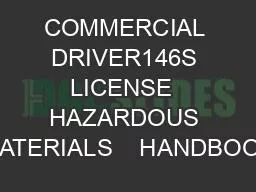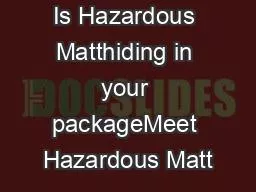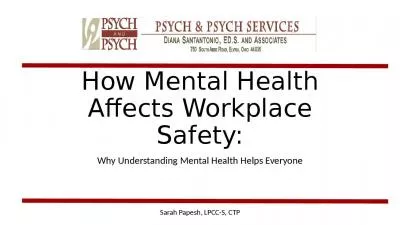PPT-Safety with Hazardous Materials in the Workplace
Author : joedanone | Published Date : 2020-06-15
Principles of LPSCS Hazardous Materials M aterials that because of their quantity concentration or physical or chemical characteristics pose a significant present
Presentation Embed Code
Download Presentation
Download Presentation The PPT/PDF document "Safety with Hazardous Materials in the W..." is the property of its rightful owner. Permission is granted to download and print the materials on this website for personal, non-commercial use only, and to display it on your personal computer provided you do not modify the materials and that you retain all copyright notices contained in the materials. By downloading content from our website, you accept the terms of this agreement.
Safety with Hazardous Materials in the Workplace: Transcript
Download Rules Of Document
"Safety with Hazardous Materials in the Workplace"The content belongs to its owner. You may download and print it for personal use, without modification, and keep all copyright notices. By downloading, you agree to these terms.
Related Documents

